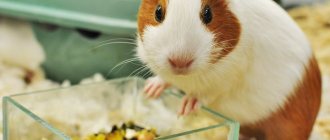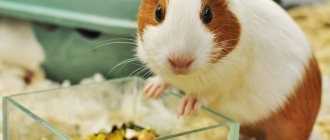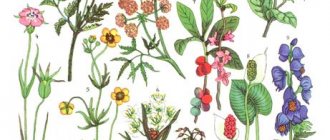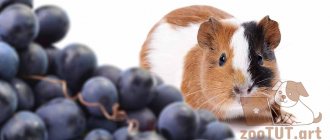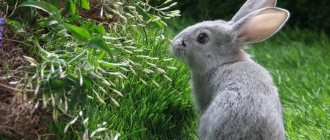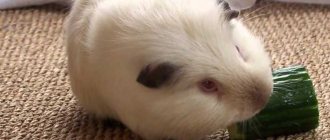Green feed
Many breeders, especially beginners, do not know what type of succulent green food they can offer their pets. After all, some herbs are dangerous not only to the life, but also to the health of domestic rodents.
We invite you to familiarize yourself with a fairly extensive list of permitted herbs:
- dandelion roots and leaves;
- sow thistle;
- shepherd's purse;
- coriander;
- peas;
- sprigs of dill, parsley;
- lettuce leaves;
- cilantro;
- celery;
- nettle;
- leaves and stems of beans, peas;
- leaves of plantain, yarrow;
- young corn shoots.
Ryegrass, vetch, sweet clover, oats and winter rye complete the list of permitted products.
Guinea pig diet
These furry animals should not be fed only dry or exclusively wet food. The guinea pig menu must be balanced and evenly introduce foods of varying degrees of juiciness. It is very important to remember to have a varied diet. Guinea pigs are fed 3-4 times a day.
The animals' diet should include:
- Fresh greens. (15–20% of the daily amount of food) – dandelion leaves, green salads, and beet tops are extremely useful for rodents;
- Grain mixtures. (Approximately 30% of the average daily amount of products) - their main components are cereals, corn, oat grains, peas;
- Fruit and vegetable treats. (About 30% of the total food);
- Dry herbs. (5–10%) - they are bought at a pet store, collected in the meadow or taken from the garden.
Zoologists recommend regularly treating your furry pets with young twigs and leaves of fruit plants. From time to time, it is necessary to add a small proportion of fat-containing products (10–15%) to the animal’s menu.
The average daily intake of succulent food for a guinea pig is approximately 50–100 g. Domestic rodents have different weights, ages, and health conditions. Therefore, it is better to discuss the individual average daily nutritional intake with your veterinarian. The total amount of food for 1 animal per day should not exceed 450 g.
Beneficial features
All the plants presented above are undoubtedly beneficial for guinea pigs. But several types of herbs are of greatest value. Let's look at how they are useful for domestic rodents.
nettle leaves
This plant is a real storehouse of vitamins and minerals. Pet rodents love her very much. It contains vitamin C, an essential element for the full functioning of guinea pigs. The succulent leaves of the plant also contain vitamin B, carotene, vegetable proteins, starch, carbohydrates and many useful microelements. Nettle is rich in organic acids and tannins.
This is one of the most nutritious green foods, containing fats, fiber and proteins. Dried nettle is a valuable product that replenishes vitamin deficiencies in animals.
The leaves of the plant are given fresh as well as dried. Harvesting nettles for the winter is done before the plants bloom. The grass is mowed, laid out on a dry surface, in a well-ventilated area without direct sunlight.
Dandelion
It is worth knowing the necessary plants
This very useful plant for domestic pigs should certainly become the basis of their diet in the summer. The animals are given tops and roots. Dandelion leaves contain B vitamins, vitamin PP, C and carotenoids.
The above-ground part of the plant has a beneficial effect on the digestive system and also helps increase appetite. Dandelion roots contain malic acid, sucrose and inulin, so they are not only possible, but also necessary.
Spinach leaves
Young spinach leaves are great for feeding pets. They contain many vitamins, minerals and proteins.
Animals are given fresh, dried and even frozen leaves of the plant.
Salad leaves
This product is one of the most loved by guinea pigs. Lettuce leaves contain sucrose and vital trace elements. The plant grows quickly, so many livestock breeders grow this plant at home in flowerpots or seedling boxes in winter.
Folic acid, which is contained in lettuce leaves, has a beneficial effect on the digestive tract and metabolism.
Dill and parsley leaves
Ascorbic acid and carotene are the main useful components that make up greens. Dill sprigs are especially useful for guinea pigs during the period of gestation and breastfeeding. Dill increases lactation and improves milk quality.
Parsley is excellent for feeding young animals during the growth period and after illnesses.
Wet grass
Guinea pigs eat wet grass, but not all of them. Wet leaves and stems are allowed to be given only to habituated animals. For many, washed green foods can cause bloating and diarrhea. Therefore, it is better not to risk it and wait until the grass dries.
It is also recommended to dry grass with dew or after rain. Considering the environmental situation, after rain it is better to wash the greens, dry them, and then they can be offered to domestic pigs.
Vegetables
Can guinea pigs have radishes?
It is permissible to use only radish tops. The root vegetable contains essential oils that can cause irritation to the mucous membranes and respiratory tract of the animal. The vegetable also causes bloating. Therefore, it is not recommended to give radishes to pigs.
Can guinea pigs eat celery?
Celery can be given in any form - stems, leaves, roots. This vegetable is included in many dry food for rodents. Celery is enriched with vitamins B, PP, E, C, A and contains phosphorus, zinc, potassium, calcium, iron and magnesium. Before eating, celery must be washed thoroughly, especially the root.
Can guinea pigs eat tomatoes?
Ripe fruits can be included in the food. Tomatoes are well absorbed by animals and contain vitamin C and carotene, which are beneficial for their body. Green tomatoes contain solanine, which can negatively affect your pet’s health.
Too many tomatoes in an animal's menu can cause loose stools.
Can guinea pigs eat cabbage?
Cabbage can be included in the animal's diet. Cabbage contains many vitamins and other substances necessary for pigs:
- ascorbic acid;
- B vitamins;
- vitamins of the PP group;
- folic acid;
- sulfur;
- calcium;
- potassium;
- phosphorus;
- amino acids;
- microelements.
Today we have cabbage lunch.
The vegetable is able to keep the animal’s fur in excellent condition and strengthen its immunity. The top dried leaves should be given. It is preferable to feed guinea pigs Chinese cabbage and broccoli. White cabbage can cause bloating.
Can guinea pigs eat potatoes?
Green and sprouted potatoes are contraindicated for guinea pigs. Raw vegetables can be given occasionally, cut into small pieces. Boiled potatoes can be offered to your pet separately or added to grains and other foods.
Can guinea pigs eat beets?
Beetroot contains many substances useful for animals: vitamins C, A and B, potassium, magnesium, phosphorus, iron. In excess, the vegetable contains fiber, so it acts on the animal’s body as a laxative. Store-bought root vegetables may contain nitrates, which are very harmful to the small body of guinea pigs. It is better to offer your pet homemade crops. The composition also contains a large amount of oxalic acid, so it is better to limit the consumption of this product.
It is recommended to give beets starting from 2 months; they are especially useful in winter and spring, when there are no fresh vegetables. The daily dose should not exceed 200 g, and it is better to exclude beets from the diet of pregnant and lactating pigs so as not to provoke an upset stomach. Beets turn stool and urine red, so if your animal has eaten them, don’t be alarmed by such changes.
Can guinea pigs eat pumpkin?
Pigs can be given all varieties of pumpkin that humans eat. For the digestion of herbivorous animals, such a product will be familiar and useful. Pumpkin contains vitamin C, calcium and phosphorus necessary for rodents. It should be borne in mind that this low-calorie vegetable will not be able to saturate the pig completely, so it is better to give pumpkin to guinea pigs as a treat.
Can guinea pigs eat bell pepper?
Another storehouse of ascorbic acid is bell pepper. Before use, the vegetable must be thoroughly washed and chopped, and the seeds removed. It is better to give the product together with dry food.
Can guinea pigs eat cucumber?
Cucumbers don't have as many nutrients as other vegetables. You can offer your pet a cucumber. The vegetable can harm your pet's health by causing digestive problems only if consumed in large quantities.
Can guinea pigs eat zucchini?
Zucchini is suitable for the diet of guinea pigs. They contain small amounts of vitamin C, calcium and phosphorus. It is better to prefer young vegetables; they can be given along with the peel, cut into crowbars.
How to process correctly
It is important to know not only what grass can be given to pet rodents, but also how to process it correctly. Grass collected in the ecozone does not need to be washed. It is worth remembering that water only washes away the remaining dust, but does not eliminate the toxic substances that the greenery has absorbed.
It is strictly forbidden to process green food with boiling water. Heat-treated herbs should not be fed to these animals. Some breeders believe that in this way they can destroy parasite eggs, but this is deeply misleading. It is impossible to destroy them by heat treatment.
In addition, heat treatment of greens makes it absolutely useless for the animal’s body, since under such influence all useful substances are destroyed.
It is not recommended to give a lot of fresh greens after wintering. An animal that is not accustomed to succulent food may get sick. Most often this provokes gastrointestinal upset, diarrhea and vomiting.
Grains, nuts and seeds
Most guinea pig owners purchase ready-made grain mixtures. As a rule, animals calmly eat purchased food in combination with succulent foods and feel great for some time. However, if the owner of the rodent did not pay attention to the nutritional pattern of his ward, the animal may soon begin to have health problems.
Some pigs choose from a grain mixture and eat only sweet dried fruits and seeds, which contain a lot of fats and carbohydrates. This often leads to obesity, liver disease, and heart failure. The most common symptoms of animal malnutrition are:
- diarrhea;
- bloating;
- the appearance of dental problems;
- constipation;
- shifting the nutritional balance from succulent feed to grain.
If at least 2 of the listed signs are observed, it is necessary to urgently change the grain mixture. You should choose a composition with a lower carbohydrate content, which has a predominant amount of wild grains.
You can prepare the grain mixture yourself. But it is important to remember that cereals should not be boiled or scalded with boiling water. They are mixed with grains and given to pets in small quantities (30% of the diet).
Table 5. Permitted and prohibited components of the grain mixture.
| Can | It is forbidden |
| Barley grains, lentils, rolled oats, oats (unpeeled), pearl barley. | Millet, corn grits, rice grains, buckwheat. |
When choosing combinations of grain mixtures, it is necessary to take into account the age of the animal, the degree of its mobility, the time of year, and the weight of the rodent. This will help avoid problems with obesity and the development of gastrointestinal pathologies.
Poisonous plants
When going to a field or forest to look for green food for your pet, do not forget that there are dangerous plants that can cause not only severe poisoning, but also the death of your pet.
Not all grass can be eaten
Deadly plants
Remember this list of poisonous plants that guinea pigs should not eat:
- sorrel leaves;
- nightshade leaves and shoots;
- leaves of lilies of the valley, daffodils;
- aloe;
- arum;
- fighter;
- celandine;
- hyacinths;
- lily;
- fern;
- geraniums of all kinds;
- henbane;
- digitalis;
- wild radish;
- stinking dope.
Feeding with such plants can be fatal.
Food poisoning
The following plants, which can cause food poisoning, are considered no less dangerous for guinea pigs:
- ivy of all kinds;
- wild mustard;
- wisteria;
- gorse;
- honeysuckle;
- dogwood;
- yew;
- laurel;
- derain;
- hellebore;
- common broom.
Of the tree species, guinea pigs are prohibited from giving hellebore and belladonna greens, privet, mistletoe, oleander, thuja, juniper and elderberry.
If you come across a poisonous plant
There is nothing wrong with this if, while feeding grass, the animal eats a couple of poisonous leaves or twigs. After all, as you know, poisons in small quantities are medicine. The degree of concentration of toxic substances in plants depends on the time of day and year.
Guinea pigs have a unique sense of touch and smell, so the animals themselves determine which food is best for them and will not harm them.
If it happens that the pig tastes a poisonous plant and feels unwell, it will remember it and avoid it next time.
Contraindications for use
Considering that celandine is a poisonous herbaceous crop, it is not worth feeding chickens, as already noted, with this plant. Experienced poultry farmers know well that chickens are omnivorous birds, and they are not averse to profiting from various herbs, including poisonous ones. This, in turn, can provoke acute diarrhea, vomiting, nausea, and intoxication of the body. Therefore, most farmers agree that celandine is the purest poison for poultry.
At the same time, some poultry farmers believe that it is worth feeding chickens with various types of herbs, including celandine, but give the plant in small doses. Laying hens increase egg production. In addition, celandine improves appetite, has a pronounced antihelminthic effect, and helps improve immunity. The antihelminthic effect will increase if wormwood is fed to chickens along with celandine.
We can advise all poultry farmers who are interested in the question “Is it possible to give celandine to chickens?” don't go to extremes. This plant should not be added specifically to food. You can give laying hens and young birds a few sprigs of this herb, and then no more than once every three weeks. In addition, there are many useful plants and herbs for poultry that not only can, but also need to be added and mixed into feed.
Harvesting hay
Dry grass (hay) is an important product in the diet of guinea pigs, especially in winter.
The cut grass is laid out in a spacious room where there is no dampness or scorching sun. During the drying process, the greens need to be turned over so that they dry evenly. Alfalfa, clover, sweet clover, oats, nettle and other useful herbs are well suited for making hay.
What to do if it’s autumn and you haven’t had time to prepare hay for your pet rodents? The following helpful tips will help you choose a good hay product for your pet:
- Brown hay is considered a bad product. Perhaps it was not dried well, it got wet, or it was just old. It is not recommended to use this food. Yellow hay indicates that the technology for drying it was violated or that the grass was mowed after it had turned yellow. Such a product does not contain useful substances, which means it will be useless for domestic rodents.
- A high-quality hay product should be dark or light green in color with a herbal aroma and slight yellow spots.
- Hay with an unpleasant damp smell indicates that it has not been dried properly. In addition, such a product most likely contains putrefactive bacteria and microorganisms.
- If the hay is thin and long, most likely it was harvested from the first cut. This dried product is considered very healthy and is most likely made from the first cutting. You should not feed your animals large and hard hay. It is believed that such a product contains few useful substances.
Twigs
From: Svinni - April 12, 2007 0:17 Good evening! I read that pigs should be given twigs to chew on. And what branches can they use (which trees or bushes) Thanks in advance
From: Mystery - April 12, 2007 3:14 am
From: Lanka.zp - April 12, 2007 3:57 am
There are a lot of topics on the forum about branches, but what to do with leaves? I read that apple, currant, raspberry, etc. branches are given with foliage. But what about willow, birch, I don’t mean fruit trees? Today I cut a bunch of branches, I’m sitting, thinking whether to pick off the leaves or leave them - this is our first spring, we have no experience in such things.
From: Galina - April 12, 2007 4:54 am
You can: birch, ash, maple, apple tree (dry the branches), alder, pear, willow (all types), rowan, linden. They can be given to the pig “for free use.”
Avoid: tree branches that have seeds in their fruit, i.e. apricot, peach, cherry, plum, etc. (because if they have not been dried for at least 6 months, they may contain cyanogen glucosides, which cause intoxication); branches of coniferous trees; citrus branches like orange, lemon, tangerine, etc. (contain limonin).
From: Lanka.zp - April 13, 2007 2:27 am
From: Galina - April 13, 2007 5:45 am
For free use - this means that the twigs (with or without leaves) can always be at the disposal of the pigs, they do not need to be limited. Here’s another example for you, a statement from the forum: My pigs get plenty of hard feed and their bite is fine. In the summer, I stocked up on apple branches with leaves (one of my favorite treats) as an additional diet; in addition to the leaves, she also eats branches, nibbles them off and eats them, chewing them thoroughly.
From: Svinni - April 13, 2007 2:45 pm
Can pigs have cherry branches and leaves? And I didn’t quite understand something, can I have imiren or not?
From: Galina - April 14, 2007 0:49
From: L_enok - April 14, 2007 2:50
And I gave my pigs and the little pig before them apple tree branches with leaves and birch. They tore down the birch tree with buds and whole twigs, and from the apple tree there was bark and young leaves at the entrance))) It seems to me that the animals themselves will not eat something harmful to them, although of course, the risk in this case is not justified and it is better not to try. Give only what is absolutely possible.
From: Venus - April 14, 2007 2:29 pm
Do any branches need to be dried for six months?
From: Galina - April 14, 2007 5:53 pm
From: Sana - April 14, 2007 6:53 pm
I only give birch and willow twigs (the only ones I can pick when we go to the pond, nothing else “edible” grows there). They go out with a bang! Just be sure to wash and dry!
From: CherTenoK - April 14, 2007 7:42 pm
Excuse me, but for example, dry apple tree branches with the leaves? Or can you tear off the leaves and give them fresh and dry the branches?
How much water do you need
In their natural habitat, guinea pigs rarely drink water and are usually afraid of open water. By the way, the most interesting thing is the origin of the name “sea”, which you can read about here. Rodents get almost all the moisture they need from plant foods.
But at home, it is unlikely that it will be possible to provide the amount of water in the food that a guinea pig needs. So put a water bottle in the cage. It is advisable not to boil; filtered water is ideal. Remember to change the water every day, even if there is some water left in it.
Grooming: brushing
Short-haired guinea pigs do not need special care for their fur; they do an excellent job on their own. If you want to give your pet pleasure, you can pet him once a week with a soft, short-bristled brush. The pig will probably like this massage, and at the same time you will comb the fur and remove some dead hairs. Pigs without hair will not need a brush at all, but with long-haired pets you will have to tinker. Guinea pigs with wavy hair require special attention, since one straw or blade of grass is enough to create a tangle.
The long-haired animal requires your daily attention - 10-15 minutes. First, the fur needs to be combed with a sparse comb, removing specks and untangling tangles with your hands. Then you should comb the coat with a thick comb and finally go through it with a brush so that the coat becomes shiny and lays down as desired.
If you comb it daily, it will not cause any particular difficulties, but if you comb the animal less often, it will be a longer and more labor-intensive process. And it’s also unpleasant for your pet, because when combing matted fur, he experiences pain, and the tangles not only spoil the appearance, but also cause discomfort: the skin under them begins to swell and become inflamed. If the tangle cannot be sorted out, you need to use scissors and carefully cut it out.
Other
Among other things, it is worth mentioning that guinea pigs do not tolerate processed foods: fried, boiled, pickled, baked, canned. The owner must not feed the pet food from his table. Including sweets: chocolate, marshmallows, cookies, etc.
Other prohibited products include:
- mushrooms;
- sauces - ketchup, mustard, etc.;
- sorrel;
- plantain.
There are special sweets for rodents - drops. They come in different flavors - berry, citrus, vegetable
Pets really like them, they should be used carefully and offered occasionally, like regular fruits. Drops contain sugar, which is harmful to animals
Before offering your pet something tasty, you should check the list of prohibited foods. If there is no information on a specific product, the best option is to put it aside and choose something else.
Plantain
Can guinea pigs eat plantain? Plantain leaves contain potassium, carotene, citric acid, vitamin C, tannins, and alkaloids. Plantain is an anti-inflammatory, sedative, helps with digestive system disorders, scabies and allergies.
Consuming plantain reduces blood sugar levels. This plant has been used to treat diabetes since the times of Ancient Greece and Rome. Plantain is especially indicated for complicated forms of diabetes. In a limited form, this plant can be given to guinea pigs.
Proper processing
Grass can be given to the rodent immediately if it is collected in clean areas. When in doubt, rinse it under running cold water.
You should not scald herbs with boiling water; this will prevent pest larvae and pathogenic bacteria from dying, and the nutritional value of the herb will decrease. The exception is nettle, which can be treated with hot water or crushed heavily so that it stops burning.
For freezing, the plants are finely chopped, placed in small batches into bags and sent to the freezer.
Where to collect
In order for the grass to benefit the rodent, you should not tear it in the following places:
- where pets can be walked;
- on pastures;
- along roads;
- near trash cans and landfills;
- close to industrial enterprises;
- in fields treated with chemicals.
You should not collect greens in forest belts and park areas where there are a large number of ticks.
It is easy to grow grass for your guinea pig in your garden. This way you can be sure of its environmental cleanliness.
Other products
Can guinea pigs eat bread? It's better not to give.
Fresh yeast bread takes a long time to digest and causes fermentation in the animal’s stomach. White bread causes bloating. Your pet can eat stale bread, but not often. Dried bread with seeds, sesame seeds and raisins can sometimes be offered to your pet as a treat.
Can guinea pigs eat nuts and seeds?
Nuts and seeds are among the allowed foods, but can cause obesity if their consumption is not limited. It is better to offer your pet almonds, walnuts or hazelnuts.
The seeds contain many components useful for the animal: fatty acids, calcium, sodium, phosphorus, proteins and vitamins. It is better to give peeled seeds and make sure that they are no more than 15% of the total feed.
Claw care
Claws on the paws do not grow quickly, but eventually reach an unaesthetic length and begin to interfere with the pet’s hygiene. On the front paws, overgrown nails curl up and interfere with walking, causing deformation of the toes. This is why your guinea pig’s claws need to be trimmed a couple of times a year. To do this, you will need special tweezers or the smallest nail clippers, as well as a regular nail file.
The claw must be trimmed so as not to touch the blood vessels, otherwise severe bleeding will begin and the animal will experience unbearable pain. Nail trimming should be done carefully and without haste. The cut should be made strictly perpendicular to the growth line so that they do not delaminate during the pruning process.
Grooming: Bathing
Clean and tidy animals with proper care and regular cleaning of the cage do not need frequent bathing. Veterinarians recommend bathing pigs 1-2 times a year. But if your pet gets dirty in any way, bathe as needed. Use special shampoos for spa treatments - you can buy one bottle and it will last for several years. For show animals, you will also need a conditioner or balm, which will make the fur silkier and shiny.
You need to bathe your pig carefully so that water does not get into the eyes, ears and nose. The animal should be lowered into a container of warm water so that the head and upper back are not submerged in the water. Then wet the fur with water and apply shampoo, rub it over the fur with smooth movements so that the fur does not tangle, and then use a sponge to carefully rinse off the shampoo. The product must be washed off thoroughly, otherwise your pet may develop dermatitis and other skin diseases.
After bathing, quickly dry the animal with a towel, comb it a little with a sparse comb and then dry it thoroughly with a hairdryer so that the hair does not become tangled during the drying process. Short-haired pigs can then be brushed with a soft brush. For long-haired dogs, the standard combing procedure is performed: with a sparse comb, then with a thick comb and a brush. After bathing, make sure that your pet is not exposed to cold or drafts - guinea pigs catch colds easily.
What grass can you give to chinchillas?
In order not to harm the health of your pet, you need to know what grass chinchillas can eat and whether it is possible to give chinchillas dandelions (this is one of the most common and accessible plants in the spring and summer). We suggest that you familiarize yourself with the list of herbs approved for consumption for chinchillas:
- Spinach – rich in proteins, magnesium and iron;
- Nettle - perfect as complementary food during the molting period, or if the female animal is pregnant;
- Apple leaves – improve digestion;
- Rosehip – suitable as a tasty treat;
- Plantain – has a sedative and anti-inflammatory effect, can be used to strengthen the immune system during an animal’s illness;
- Dandelions – many owners doubt whether chinchillas can have dandelions. So, dandelions are useful for chinchillas, and you can give them any parts of this plant: flowers, leaves and roots. The greatest amount of useful elements is contained in the leaves of this plant;
- Raspberry leaves – used as an additive to hay;
- Burdock – improves metabolism;
- Chamomile – helps cope with gastrointestinal disorders. The main thing is not to overdo it, otherwise the effect will be exactly the opposite;
- Parsley – increases appetite, restores immunity;
- Bird knotweed is a rich source of various vitamins;
- Lingonberry leaves are suitable for general health;
- Strawberry leaves and flowers strengthen the walls of blood vessels.
Each plant has its own set of unique properties, so it's not just a treat or treat. You need to select herbs to feed your animal based on its health status and needs.
